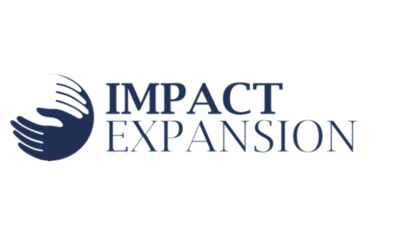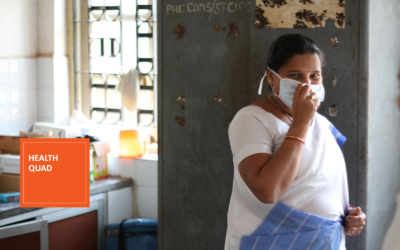This is a copy from the original article of DEVEX & Burton Bollag.
Washington — The International Committee of the Red Cross announced the launch of the world’s first Humanitarian Impact Bond on Friday, aiming to raise 26 million Swiss francs ($27.3 million) to build and operate three physical rehabilitation centers in conflict-affected parts of Africa over the next five years.
While social impact bonds and development impact bonds have been around since 2010 and 2015, respectively — providing a new way to finance social services and development projects — ICRC’s scheme is a first for the humanitarian sector. The model offers a type of results-based financing, since the ultimate funders only pay back the investors in full if the project is deemed a success. Institutional and private investors will put up the money needed for the physical rehabilitation project, establishing centers in Mopti, Mali; Maiduguri, Nigeria; and Kinshasa, Democratic Republic of Congo, to support those injured by violent conflict, disease or accident.
At the end of five years, the investors will be repaid based on the success of the centers. The money will be returned to the them in full, with interest, or only in part, depending on the results of an outside evaluation of the centers’ performance. The investors can earn as much as 7 percent interest per year if the project gets a very good evaluation, or lose up to 40 percent of their investments if the results are deemed very poor, as measured by the number of people the centers have helped. The money to pay back the investors will come from so-called “outcome funders” — in this case, the overseas development agencies of Switzerland, Belgium, the U.K., and Italy, as well as La Caixa Foundation, a private Spain-based charity. While the idea is that these donors will ultimately fund the project, the investors absorb part of the risk. In a statement, ICRC President Peter Maurer described the plan as “radical” and “innovative.” He added: “It is an opportunity not only to modernize the existing model for humanitarian action, but to test a new economic model.”
Officials who have been working on the scheme say it responds to ICRC’s quest for new financing streams as its work around the world and its annual budget — currently 1.7 billion Swiss francs ($1.8 billion) — continue to grow.“For many years now the ICRC has been looking for new funding from governments that do not yet provide support, private sources, and innovative funding arrangements,” said Tobias Epprecht, the ICRC official in charge of the bond. “This is an important learning experience for us. If it works, it will be a stepping stone to larger projects.”
Physical rehabilitation seems a logical area for the ICRC — the branch of the international Red Cross movement that provides assistance to victims of war and other situations of violence — to experiment with new financing given the group’s vast experience in the field and the high levels of demand.
The Geneva-based organization is the world’s largest provider of physical rehabilitation services in developing and fragile countries. In 2016, ICRC operated 139 projects in 34 countries, helping almost 330,000 people with physiotherapy and mobility devices, including wheelchairs, artificial limbs and braces, according to a media release. Once built, the three new centers will be handed over to the national health authorities of each country — Mali, Nigeria and the DRC. For the first three years, ICRC will train staff in the use of equipment, producing prostheses and providing rehabilitation, and will continue to assist the centers as needed indefinitely thereafter. Together the three centers are expected to serve some 6,000 disabled people annually.
Measuring success and managing risk
The ICRC was assisted in structuring the bond over a two-year period by KOIS, a firm specialized in investing clients’ funds in instruments that have a positive impact on society and the environment. “The challenge was to develop a product that would make investors comfortable with the idea to invest in a very volatile and fragile context: post-conflict zones,” founder and Managing Director François de Borchgrave told Devex. “ICRC’s expertise and reputation were obviously key factors in making this credible.”
Another key challenge was planning the five-year evaluation. This involved “collecting and mining a huge amount of data from 15 years of ICRC history in physical rehabilitation centers, and deriving targets and benchmarks for the humanitarian impact bond that would be backed by realistic innovation programs,” he said.
To evaluate the success of the project, the outside auditor — Philanthropy Advisors, a philanthropy consulting firm — will first benchmark the efficiency of ICRC’s existing rehabilitation projects, according to the “staff efficiency ratio”; that is, how many people receive mobility devices per physical rehabilitation professional. As some types of mobility devices take longer to build and fit, the numbers will be weighted to avoid incentivizing against devices that require more time, Epprecht said.
While any party involved in the impact bond can conduct an audit of the program at any time, only the staff efficiency ratio has an impact on the payment formula. “The choice of metric — and how it is calculated, to allow for comparability across centers — and selection of baseline centers was the result of a long benchmark exercise to pin down key drivers for efficiency performance,” said de Borchgrave, adding that the audit will also measure “how well a person has been helped: it is not only about providing a new limb, but also about making sure that the person can then function properly with the new limb, to gain real independence. That single key metric is the one that actually summarizes the result of all initiatives put in place,” he said.
The investors contributing to the project include New Reinsurance Company Ltd — NewRe, a Swiss reinsurer — as well as other institutional and private investors recruited by Lombard Odier Bank, a major Geneva-based private bank that is a co-sponsor of the humanitarian impact bond. Lombard Odier worked for several years with ICRC to develop the financial and legal modalities, and evaluation procedures, to make the bond a reality.
It was necessary to “selectively approach clients who have a strategic fit with the mission, and can take on the risk,” said Maximilian Martin, Lombard Odier’s global head of philanthropy. “You’re putting 40 percent of your capital at risk,” but compared to the relatively modest amounts involved, “you can unlock a disproportionately positive impact” in innovating humanitarian action.
The advantages of impact bonds
Although this is the first such project in the humanitarian sphere, it is the latest using this type of financial instrument since the first social impact bond was created in the U.K. in 2010 to finance a prisoner rehabilitation program. Since then about 90 social impact bonds have been created to finance improved social outcomes in 16 developed countries, as well as one in Colombia, according to Emily Gustafsson-Wright, a fellow at the Brookings Institution, a Washington, D.C.-based think tank.
“The humanitarian impact bond is actually a development impact bond for a rehabilitation or a humanitarian purpose,” she added.
Emily Gustafsson-Wright, fellow at the Brookings Institution
Such bonds represent a “revolution in service provision” since they encourage providers of various social and humanitarian services to better manage and monitor their performance, she said. Organizations that finance social and humanitarian services are attracted to the impact bond model since it incentivizes better performance and spreads the risk to the investors.
Although Gustafsson-Wright expects the growth of impact bonds to be modest — since they are not easily scalable to large numbers of projects — she suggested that “they are beginning a shift in the culture from paying for inputs to paying for outputs and outcomes.” De Borchgrave added that the model “paves the way for ‘pay-for-success’ programs in the humanitarian sector and opens up humanitarian aid to innovative social finance.”




